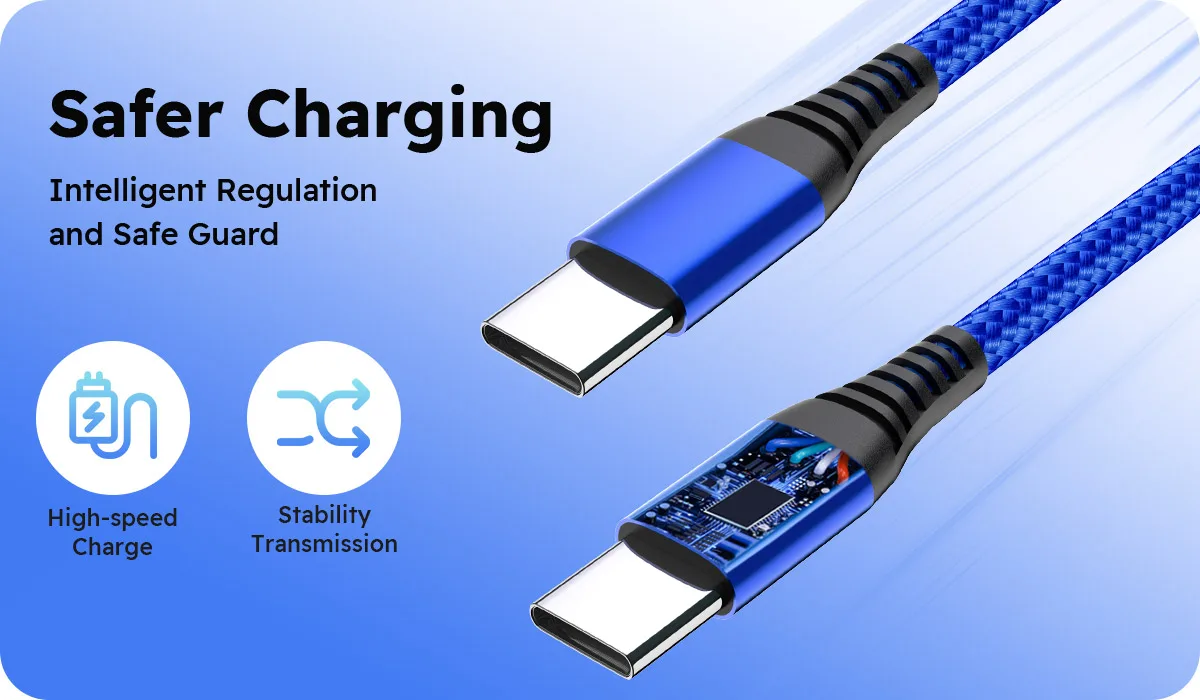Have you ever encountered this situation: a cable that was working perfectly yesterday suddenly stops working today? Or your mobile phone charging cable starts experiencing poor contact issues after just a few months of use?
mobile phoneCharging cable failure is a frustration that almost every electronic device user encounters. Statistics show that average users need to replace 2-3 charging cables per year, causing not only financial loss but also daily inconvenience.
This article dives into why charging cables fail, how to choose and use them correctly, and offers practical tips to extend their lifespan. Read on!
Why Do Charging Cables Fail?
The answer to why charging cables fail is more complex than you might imagine. Cable damage usually isn’t caused by a single factor, but rather the combined effect of multiple causes. Let’s take a look at what they are:
1.Frequent Twisting
Most charging cable damage stems from physical stress. When we bend, twist, or pull charging cables, the internal copper wires experience tremendous pressure. The connector area is particularly vulnerable, as frequent plugging/unplugging and bending make this the weakest point most prone to breakage.
2.Extreme Temperatures
Many people overlook the temperature’s impact on mobile phone charging mobile phone charging cables. Heat generated during charging softens the plastic sheathing inside cables, and prolonged exposure to high temperatures accelerates material aging.
3.Poor Quality
The quality difference among charging cables in the market is enormous. Some cheap products use thinner conductors and inferior sheathing materials to reduce costs. While these products are inexpensive, they often start showing problems after just a few months of use.
How to Repair Your Charging Cables?
While replacing with a new charging cable is the safest choice, mastering some basic repair techniques can temporarily solve problems in emergency situations.
1.Handling Poor Connector Contact
When the plug has poor contact, try cleaning it first.
Find a cotton swab and dip it in alcohol (the kind sold at pharmacies). Use the cotton swab to wipe the metal contacts on the plug.
Often, poor plug performance is due to dust or dirt buildup. After wiping, wait a few minutes for the alcohol to evaporate, then test if it works.
If cleaning doesn’t help, you can lightly sand the metal contacts with fine sandpaper. Be gentle and don’t apply force, or you’ll damage the plug.
2.Temporary Repair of Cable Breaks
You can gently bend different parts of the cable to see where bending causes the charging to disconnect. After finding the break location, use electrical tape (the black tape electricians use) to tightly wrap the broken area. After wrapping, avoid bending that area again.
3.Handling Sheathing Damage
If only the outer plastic covering is broken but the internal wires are intact, you can repair it this way:
First, clean the damaged area, then use electrical tape to tightly wrap the broken area in layers. Make sure to wrap tightly and prevent water entry.
You can also buy heat shrink tubing (available at electronics stores), put it on, and blow with a hair dryer for better results.
When to Replace the Cable?
Broken charging cables are very inconvenient, so you need to know when to get a new one. When the following situations occur, stop using the old cable.
1.Inadequate Charging Performance
Good charging cables work immediately when plugged in and maintain normal speed. If you notice charging becoming increasingly slow, what used to take 30 minutes for half a charge now takes 1-2 hours, that’s a cable problem. When replacing cables, choose quality cables like the New Nylon USB-C to USB-C 100W Cable, which maintains consistent charging performance throughout its lifespan, delivering reliable power transfer without degradation.
2.Physical Cable Damage
The most obvious sign is visible cable damage. If the outer covering has cracked and you can see the colored internal wires, immediately discard it and buy a new one. Also, if the plug is crooked, bent, or blackened, these all indicate it’s beyond repair.
3.Unstable Cable Connection
New charging cables fit tightly when plugged in without wobbling. If your cable is loose when inserted, requiring hand support for charging, or disconnects with a slight touch, it’s time to replace it. Loose connections not only slow charging but may also damage your device’s charging port.
If you’re looking for a USB Type-C charging cable that lasts a long time and doesn’t break easily, take a look at xinhangdao cable, which is braided nylon and charges quickly.
Take action now and say goodbye to the trouble of frequently changing charging cables.Product Catalog

